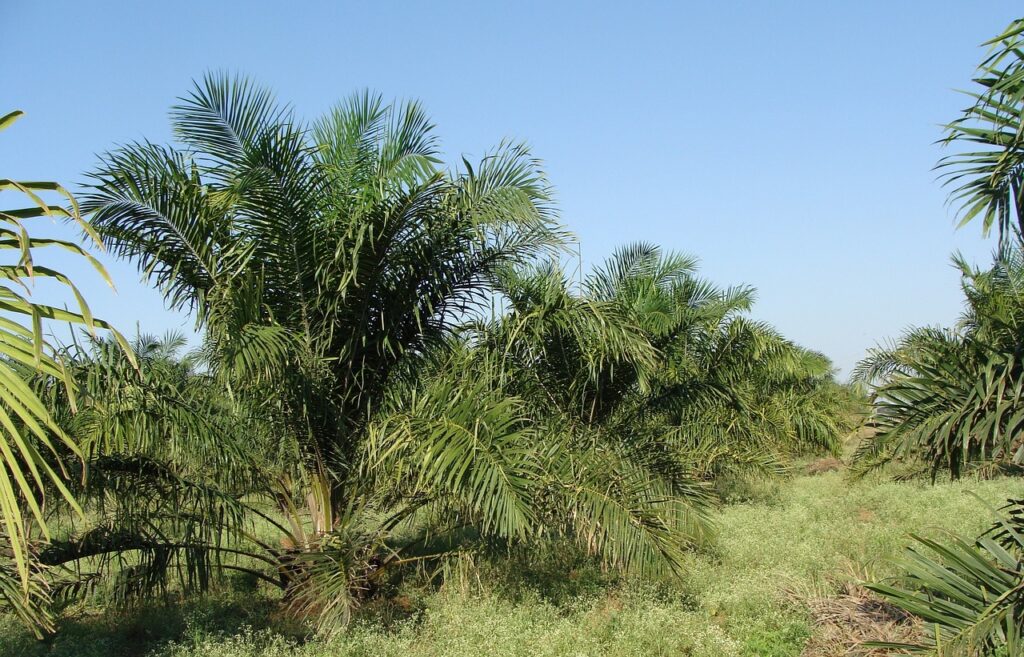Impact Investing
What Is the Carbon Footprint of Colombian Palm Oil
In the first study on the palm oil carbon footprint, 27 mills and 11 plantations in the country were included and the national production of palm oil in 2017 was close to 70%. In this new study, it was possible to increase the number of mills to 45 and the plantations, which represented about 85% of the national oil production in 2021. There are 74 active mills in Colombia.

Colombia is the fourth largest palm oil producer in the world and the first in the Americas, hence the carbon footprint is an important subject. In 2022, production was 1.3 million tons and projections for the end of this year are 1.8 million tons. There are 580 thousand hectares of oil palm planted in the country and the crop is the second largest planted area in the country, after coffee.
One of the challenges of this agroindustry is to achieve sustainable productivity, to which producers, businessmen, Fedepalma, and its research center Cenipalma are committed.
The carbon footprint is the estimate of emissions generated by soil use, chemical fertilization, fossil fuel use, emissions generated by agrochemicals, and energy use” said Nidia Elizabet Ramirez, leader of the Biorefinery and Sustainability Area of Cenipalma.
Read more about the carbon footprint generated by palm oil plantations in Colombia and find the latest business news of the day with the Born2Invest mobile app.

This week at the National Technical Meeting, held in Bucaramanga, Nidia Elizabeth Ramirez presented the research: ‘Estimates of the carbon footprint of palm oil in Colombia – Palm Sector’
“The carbon footprint of palm oil in Colombia in 2017 was -689 kilograms of CO2, equivalent per ton of palm oil produced. A new study, with more information from the plants and plantations, to update the data, indicates that this footprint is -77 kilograms of CO2 equivalent per ton of crude palm oil produced. This decrease in the footprint may be due to the entry of real information compared to the estimate we had made in the first study. Additionally, we are also taking more real data on land use change and this also affects the final data,” the researcher explained (Read here: 22 municipalities in Bolivar grow oil palm).
“That result indicates that the oil palm sector needs to do more management and more use of good practices,” she added.
“Why did it happen? First, more real data on land use was obtained, second the capping of the lagoons is one of the highest emissions that the sector has and unfortunately the benefit plants are entering this capping slowly, that emission has not been able to decrease, and some data that are there are the number of chemical fertilizers that are added to the plantation, “explained Ramirez.
“The carbon footprint is the estimate of emissions generated by soil use, chemical fertilization, fossil fuel use, emissions generated by agrochemicals, and energy use. Of these, the most incident is methane, which is generated by the lagoons of the plant’s wastewater treatment system. It is the degradation of organic matter, which is present in the sector’s wastewater and is what generates the most methane,” said the researcher.
This footprint – she added – has a part that is the carbon capture generated in the plantations. “When I have the emissions and absorptions, the sum of them generates the carbon footprint,” she said.
The information to obtain this footprint is collected directly from the companies and Cenipalma analyzes the information.
“The Colombian footprint, compared to large producers such as Malaysia and Indonesia, is very good. We emit less or have a more beneficial footprint for the environment. However, we cannot stop there and we must manage good practices to continue reducing our carbon footprint”.
In the first study, 27 mills and 11 plantations in the country were included and the national production of palm oil in 2017 was close to 70%. In this new study, it was possible to increase the number of mills to 45 and also the plantations, which represented about 85% of the national oil production in 2021. There are 74 active mills in Colombia.
__
(Featured image by tristantan via Pixabay)
DISCLAIMER: This article was written by a third party contributor and does not reflect the opinion of Born2Invest, its management, staff or its associates. Please review our disclaimer for more information.
This article may include forward-looking statements. These forward-looking statements generally are identified by the words “believe,” “project,” “estimate,” “become,” “plan,” “will,” and similar expressions. These forward-looking statements involve known and unknown risks as well as uncertainties, including those discussed in the following cautionary statements and elsewhere in this article and on this site. Although the Company may believe that its expectations are based on reasonable assumptions, the actual results that the Company may achieve may differ materially from any forward-looking statements, which reflect the opinions of the management of the Company only as of the date hereof. Additionally, please make sure to read these important disclosures.
First published in EL UNIVERSAL. A third-party contributor translated and adapted the article from the original. In case of discrepancy, the original will prevail.
Although we made reasonable efforts to provide accurate translations, some parts may be incorrect. Born2Invest assumes no responsibility for errors, omissions or ambiguities in the translations provided on this website. Any person or entity relying on translated content does so at their own risk. Born2Invest is not responsible for losses caused by such reliance on the accuracy or reliability of translated information. If you wish to report an error or inaccuracy in the translation, we encourage you to contact us.

-

 Impact Investing2 weeks ago
Impact Investing2 weeks agoEU End-of-Life Vehicles Rule Pushes Cars Toward a Circular Economy
-

 Business1 week ago
Business1 week agoTopRanked.io Weekly Affiliate Digest: What’s Hot in Affiliate Marketing [1xBet + FIFA World Cup]
-

 Crypto5 days ago
Crypto5 days agoBitMine Surpasses 4 Million ETH Holdings Amid Market Volatility
-

 Crypto2 weeks ago
Crypto2 weeks agoTether Targets $500 Billion Valuation in Landmark Funding Push

















